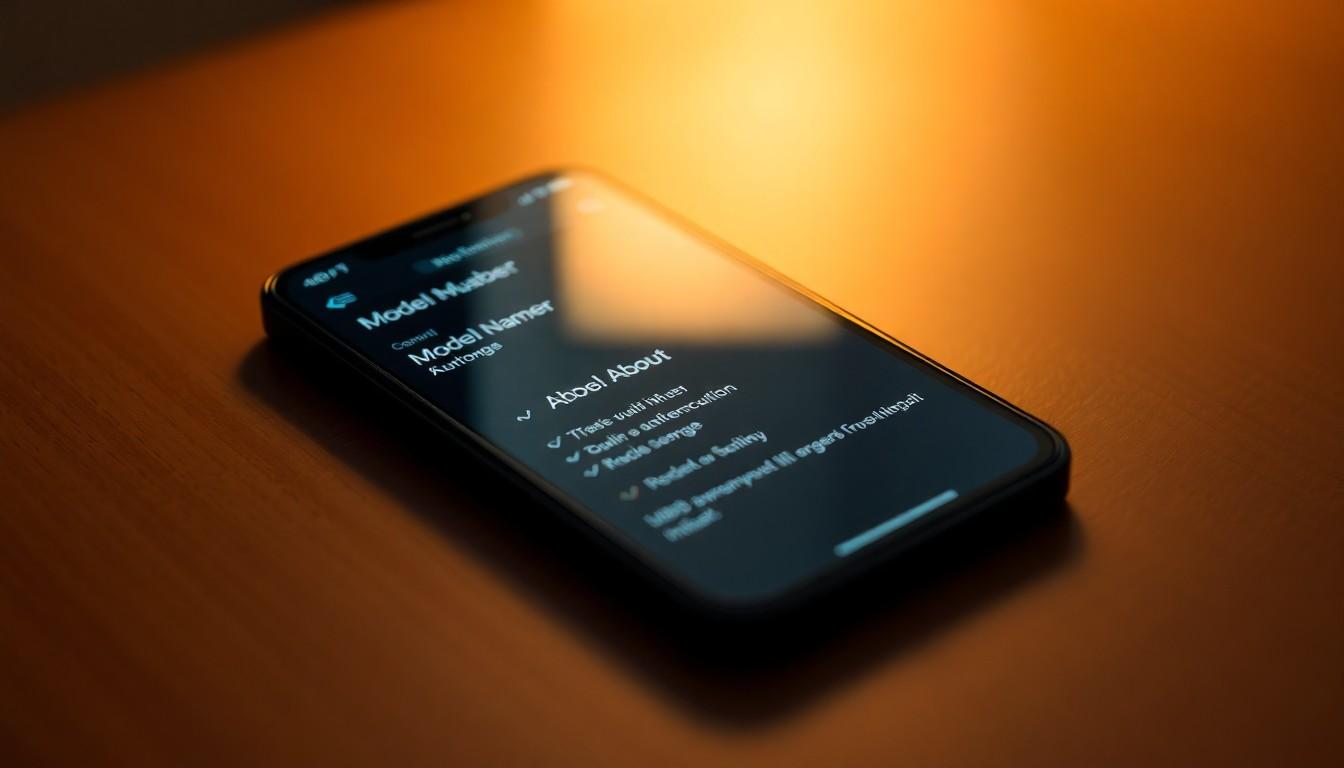In a world where smartphones reign supreme, knowing exactly which iPhone model you own can feel like cracking a secret code. Is it the sleek iPhone 12 or the legendary iPhone 6? Fear not! Figuring it out doesn’t require a degree in tech wizardry or a crystal ball.
Understanding iPhone Models
Identifying the correct iPhone model simplifies the process of obtaining support or accessories. Several iPhone generations emerged over the years, each with distinct adaptations and improvements.
Major iPhone Generations
First-generation iPhones debuted in 2007, setting a precedent for future devices. The iPhone 3G introduced 3G connectivity in 2008, enhancing internet speed. Subsequent releases, like the iPhone 4 in 2010, featured a new design and Retina display. The iPhone 6 and 6 Plus arrived in 2014, showcasing larger screens and improved battery life. In 2020, the iPhone 12 series incorporated 5G capability and enhanced camera systems. Most recent models, such as the iPhone 14 series, focus on advanced photography features and durability.
Key Features of Each Generation
Innovations consistently mark each iPhone generation. Front-facing cameras became standard starting with the iPhone 4, enabling video calls. Enhanced processing power arrived with the A-series chips, starting with the iPhone 5’s A6 chip. The introduction of Touch ID occurred in the iPhone 5s, enhancing security. Subsequent iPhones featured Face ID technology, beginning with the iPhone X. Battery efficiency improved across generations, with notable advancements in the iPhone 11 and newer models. Each model showcases unique advancements, setting benchmarks in smartphone technology.
Using Settings to Identify Your iPhone

Identifying the iPhone model via settings is effective and simple. It provides clear information about the device.
Accessing Your iPhone Settings
First, open the Settings app on your iPhone. Tap on “General” in the menu, then select “About.” This section contains various details about the device, including the model name and number. Users can quickly navigate through the settings, as the interface is user-friendly. Searching within settings ensures a straightforward process for determination.
Finding the Model Name and Number
Locate the “Model Name” entry for the official name of the device. It displays the iPhone’s model, such as iPhone 12 or iPhone 13. Right below, you’ll find the “Model Number,” which consists of letters and numbers. The model number, typically formatted as Axxxx, provides specific details about the device’s generation. Examining these fields is essential for accurate identification.
Physical Characteristics of iPhones
Identifying an iPhone’s physical characteristics aids in determining its model. Size and shape play significant roles in this identification process.
Identifying iPhone Size and Shape
Measuring the dimensions helps differentiate between models. An iPhone 13 for example measures 146.7 x 71.5 x 7.65 mm. The sleek design of the iPhone 12, which has similar dimensions, offers subtle differences in weight and finish. Comparing thickness also assists; iPhone SE (2nd generation) features a more compact 138.4 x 67.3 x 7.3 mm profile. Different sizes accommodate various preferences, ensuring a diverse user experience across the lineup.
Notable Design Elements
Examining specific design traits further clarifies the iPhone model. The iPhone 14 introduces a Ceramic Shield front, increasing durability. Notably, the camera layout varies; iPhone 11 has a dual-lens setup, while iPhone 12 and newer models flaunt a square camera module. Color options enhance identification; the iPhone XR offers vibrant hues like yellow and blue, whereas the iPhone 13 presents classic shades such as midnight and starlight. The presence of Face ID technology, integrated into the display of newer models, sets them apart from earlier editions that utilize Touch ID.
Using External Resources
Utilizing external resources simplifies the process of identifying an iPhone model. Numerous options exist for users wanting additional assistance.
Apple’s Official Resources
Apple offers a range of official resources for model identification. Users can visit the Apple website, where they can find detailed information about each iPhone model. The support page provides a clear breakdown of features and specifications for all devices. Additionally, Apple’s customer support team can answer specific questions. Engaging with these official avenues ensures users have accurate information regarding their device.
Third-party Websites and Apps
Various third-party websites and apps enhance the model identification process. Websites like EveryMac.com provide comprehensive databases of Apple products, detailing specifications and distinguishing features. Apps designed for hardware identification can be downloaded from app stores. These tools often allow users to check their device details using model numbers or characteristics. Relying on these external resources offers alternative methods for recognizing an iPhone model, reinforcing the understanding of device-specific features.
Conclusion
Identifying the right iPhone model is crucial for users looking to get the most out of their device. By utilizing the settings method and paying attention to physical characteristics, anyone can easily determine their iPhone’s identity. With the vast array of models available, knowing the specific version helps streamline the process of obtaining support and accessories.
Leveraging Apple’s resources and third-party tools further enhances the identification experience. This knowledge empowers users to make informed decisions and fully enjoy the features their iPhone offers. Understanding the nuances of each model can lead to a more satisfying user experience in the ever-evolving world of smartphones.